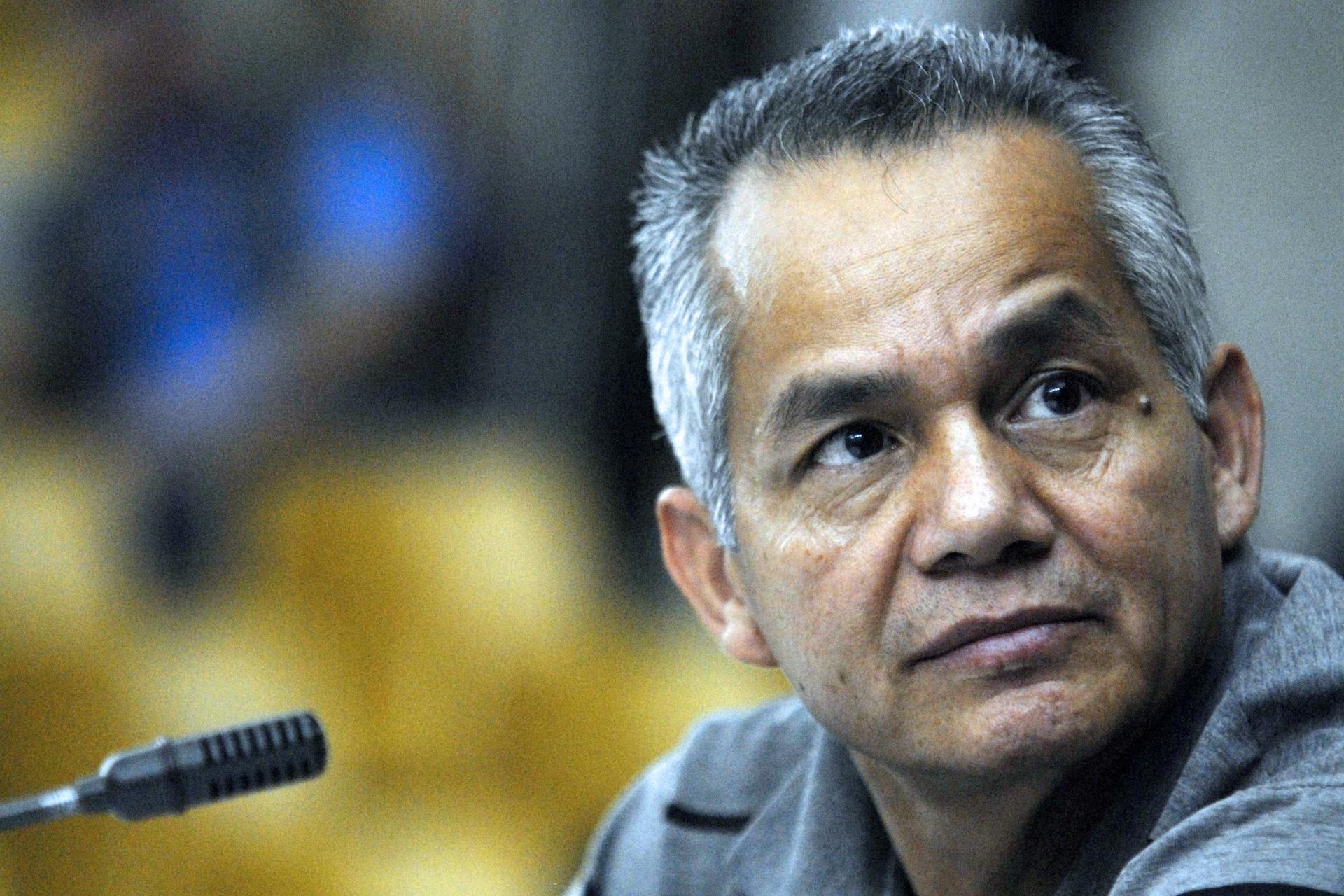Guatemala sentences ex-soldier to 6,060 years
Former Army Special Forces soldier Pedro Pimentel in Supreme Court of Justice in Guatemala City on March 12. The court handed him 6,060 years in prison for taking part in a 1982 massacre.
GUATEMALA CITY — Solomin Hernandez was only 11 when soldiers stormed his village. They ransacked homes, blindfolded civilians and bludgeoned 201 innocent people to death with sledgehammers before dumping them down a 50-foot-deep well.
Hernandez remembers the bloodshed in gripping detail. He watched as state forces raped women in public squares, smashed the heads of infants and shot husbands and fathers in a brutal massacre in the Las Dos Erres township that lasted more than 12 hours on Dec. 6, 1982.
Now, almost 30 years later, Hernandez has found justice in Guatemala’s courts, where he recently testified against one of the soldiers he said slaughtered his friends and family.
“Let this case be a window to the world,” he said, fighting back tears as he addressed the courtroom. “Let everyone look through it and see the horror and sorrow that we suffer so that these atrocities never happen ever again, anywhere.”
Read more: Guatemalan man, raised by his family's killers, fights back
The Guatemalan court sentenced former elite forces soldier Pedro Pimentel to 6,060 years in prison this week for participating in the Las Dos Erres massacre, one of the worst of the country’s decades-long civil war. Judges gave him 30 years for each of the 201 murders and an additional 30 for crimes against humanity. The ruling was largely a symbolic statement since Guatemalan law allows a maximum sentence of only 50 years.
Pimentel, 55, was one of some 20 soldiers sent to Las Dos Erres in northern Guatemala in December 1982 to search for missing weapons, the court said.
He is the fifth soldier to be sentenced for the killings since trials began last year and his conviction comes as the Central American nation works to address wartime human rights violations and to repay a debt to families that spent decades, with little luck, demanding justice.
“This is a step forward,” said Alejandra Castillo, assistant director of Guatemala’s Human Rights Legal Action Center. “This case gives us the opportunity to uncover what people really went through, to hear and to get to know the survivors of our internal conflict and to recover our national memory.”
Almost 250,000 people were killed or disappeared during the country’s civil war. Many were hurled into clandestine graves and never identified. A Guatemalan truth commission report found that the army and paramilitary groups were responsible for 90 percent of more than 400 massacres committed in mostly indigenous Maya communities that the army accused of aiding leftist guerrillas.
More from GlobalPost: Latin America’s hidden growth story
Anthropologists and forensic scientists have begun to exhume mass graves at old military bases across the country where they found piles of battered skeletons. Experts took DNA samples from surviving relatives hoping to find matches and finally give names and faces to the missing.
While 15 years have passed since the war ended, bitterness still runs deep in communities where agonizing memories of the conflict strike sensitive chords.
“They stained our lives forever,” said Maria Luisa Col, a member of the Poqomchi’ indigenous group whose husband was kidnapped by soldiers on his way to work in 1983. She never saw him again. “The military mocked us. They did whatever they wanted to us.”
Courts this week also began trying five paramilitaries for their involvement in the Plan de Sanchez massacre on July 18, 1982 that that left 268 people dead.
And earlier this year, a judge sent to trial former dictator Efrain Rios Montt, who ruled Guatemala from 1982 to 1983. While in power, Montt launched a “scorched earth” campaign that reduced entire communities to ashes.
The recent war crimes trials have given victims a platform to purge their painful stories, often bringing them to tears before judges as they recount tales of torture, rape and murder.
More from GlobalPost: Guatemala wants to legalize it
In the courtroom, the convicted soldier sympathized with victims, saying no one should experience such suffering. But he also maintained his innocence, claiming he had not been present during the Las Dos Erres massacre.
Pedro Garcia, who helped found the farming village of Las Dos Erres, which is located in the country's sweltering flatlands, pointed to Pimentel during his testimony, swearing that he saw the former soldier’s face at the well.
During the trial, Garcia recalled the dream that had brought him to Las Dos Erres.
“Our vision when we built Las Dos Erres was to build a better future for our families, but that future never came,” he said. “That future became a future scarred by fear and sadness.”
Every day, reporters and producers at The World are hard at work bringing you human-centered news from across the globe. But we can’t do it without you. We need your support to ensure we can continue this work for another year.
Make a gift today, and you’ll help us unlock a matching gift of $67,000!
